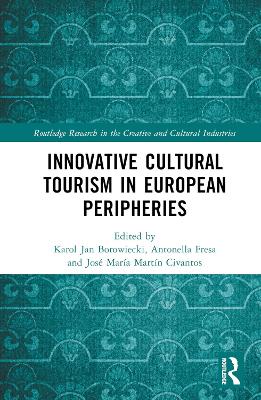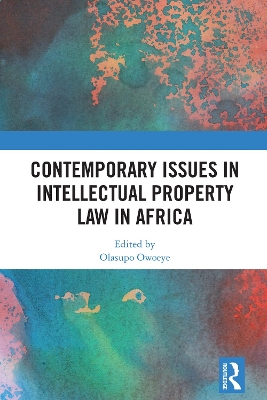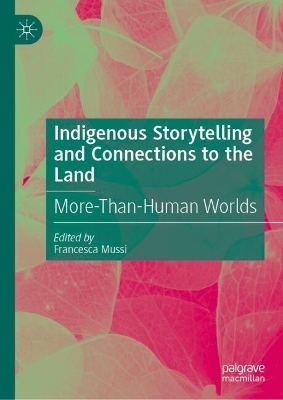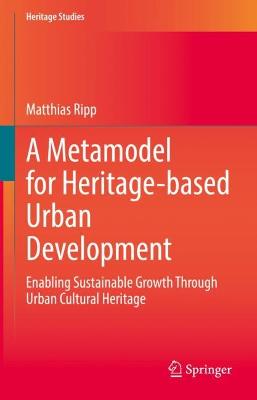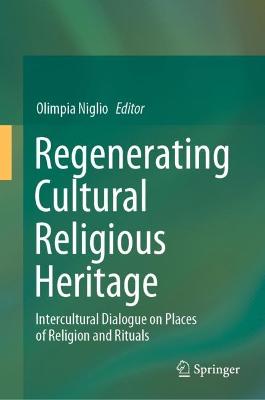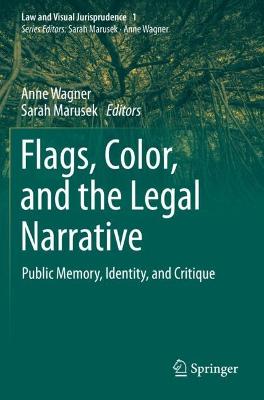Intangible Cultural Heritage, Sustainable Development and Intellectual Property
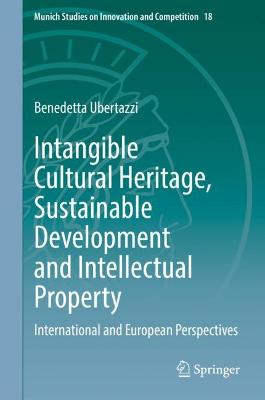 portes grátis
portes grátis
Intangible Cultural Heritage, Sustainable Development and Intellectual Property
International and European Perspectives
Ubertazzi, Benedetta
Springer International Publishing AG
08/2022
384
Dura
Inglês
9783031081033
15 a 20 dias
764
Descrição não disponível.
1: IntroductionThe introduction provides a sharp, concise introduction to the general aims andargument of the book, in addition to setting out the structure through which thebook will engage with these aims.2: Intangible Cultural HeritageChapter 2 focuses on the first major part of this book, namely ICH. It lays thegroundwork for some of the broader theoretical themes that run through the book,namely: defining the nature of ICH, principally through the domains of ICH setout in the UNESCO 2003 Convention; the notion of safeguarding ICH; the role ofcommunities, groups and individuals within the framework of the 2003 Conventionand finally the instruments, objects, artefacts and cultural spaces associated withICH.2.1 The Definition and Practice of Intangible Cultural Heritage2.2 Safeguarding2.3 The Subjective Component of Intangible Cultural Heritage: Communities,Groups and Individuals2.4 The Objective and Spatial Components of Intangible Cultural Heritage:Instruments, Objects, Artefacts and Cultural Spaces3: Sustainable Development and Intangible Cultural HeritageChapter 3 focuses on the second major part of this book, namely sustainabledevelopment. Specifically, sustainable development can be of an economic, socialand environmental character, inclusive of human rights, facilitative of mutualrespect among communities and intended to better safeguard ICH. The Chapterexamines how culture and ICH in particular are linked to sustainable developmentas illustrated in the 2003 UNESCO Convention, its Operational Directives and itsOverall Results Framework. The Chapter analyses the role of ICH as a strategicresource to enable inclusive sustainable development and therefore participationand inclusive governance. The chapter also introduces ICH as a relevant tool toenable environmentally sustainable development, as well as inclusive economicdevelopment. In addressing inclusive economic development, chapter 3 laysthe foundation for subsequent chapters to explore the relationship between ICHand IPRs, intended as a mechanism to foster valorization and promotion of ICH,towards its viability and vitality for the benefit of the communities concerned. Peaceand security, as a requirement that is essential for sustainable development, anda key component of UNESCO's mission, is also addressed in the chapter. Finally,chapter 3 concludes with analysis of the Covid-19 pandemic as a case study on therelationship between ICH and sustainable development, exhibiting the importanceof community-based resilience, with indigenous and local communities at theforefront of this process.3.1 The Definition and Practice of Sustainable Development in the context ofIntangible Cultural Heritage3.2 Inclusive Social Development: Participation and Inclusive Governance3.3 Environmental sustainability3.4 Inclusive Economic Development and Commercialisation3.5 Peace and Security3.6 Covid-19: A case study4: Intellectual Property Rights and Intangible Cultural HeritageChapter 4 focuses on the third major part of this book, namely IPRs. It providesanalysis of different IPRs, including sui generis IPRs, and the strengths andweaknesses of such rights as mechanisms capable of safeguarding ICH. Thechapter argues that while IPRs can be insufficient to protect ICH, and can evenreinforce misappropriation of such heritage, there are circumstances in whichIPRs are valuable not only in their capacity to empower indigenous and localcommunities themselves, but also in their capacity to work alongside othersafeguarding mechanisms that can offer different protections.4.1 Intangible Cultural Heritage, Intellectual Property Rights and TerritorialEnforcement4.2 Copyright and Neighbouring Rights4.3 Patents, Industrial Designs4.4 Know-how, Trade Secrets, Databases and Contracts4.5 Individual, Collective, Certification Trade Marks4.6 Geographical Indications, Protected Designation of Origin, TraditionalSpeciality Guaranteed4.7 The Limitations of Intellectual Property Rights as Safeguarding Mechanisms forIntangible Cultural Heritage4.8 Sui Generis Intellectual Property Rights and the Relationship between Propertyand Heritage4.9 Intellectual Property Rights May Be Capable of Safeguarding IntangibleCultural Heritage5: Intellectual property rights on UNESCO intangible cultural heritageChapter 5 analyses the relationship between ICH and IP in practice. It analysesICH that has been inscribed in the UNESCO Lists under the UNESCO 2003Convention and in relation to which the relevant nomination files indicate that theinterested communities have also adopted IPRs as a safeguarding measure fortheir ICH. This chapter provides an insight into the different types of IPRs usedby ICH-bearing communities to safeguard their traditional practices. The Chapterconcludes with a consideration of the relationship between the UNESCO 2003Convention and IPRs as safeguarding measures for ICH.5.1 Intellectual Property Rights and the Convention5.2 Copyright: Dikopelo folk music of Bakgatla ba Kgafela in Kgatleng District(Botswana)5.3 Copyright and certification trademark: Indonesian Batik5.4 Patents, Trade Marks, ContractualClauses and Non-Disclosure Agreements:Craftsmanship of mechanical watchmaking and art mechanics (France andSwitzerland)5.5 Collective trademarks: Traditional violin craftsmanship in Cremona (Italy)5.6 Individual trademark: 'Mediterranean Diet" (Italy)5.7 Geographical Indications, Protected Designation of Origin, TraditionalSpeciality Guaranteed: Traditional agricultural practice of cultivating the 'vite adalberello' (head-trained bush vines) of the community of Pantelleria (Italy)5.8 Intellectual property rights on intangible cultural heritage shall respect the spiritof the Convention6: The Relationship between Intangible Cultural Heritage, SustainableDevelopment and Intellectual Property RightsChapter 6 brings the relationship between ICH, sustainable development and IPRsto the fore. It provides an analysis of the challenges and opportunities of usingIPRs to achieve social, environmental and economic sustainable developmentaims for ICH safeguarding that are articulated by the 2003 UNESCO Convention.This chapter also addresses the enforcement of IPRs on ICH and concludes withan analysis of the challenges of the cross-border enforcement of IPRs by theinterested communities.6.1 Social Sustainable Development: Inclusive Multilevel Governance Systems ofCollective Intellectual Property Rights engaging and empowering Communities6.2 Environmental Sustainable Development: Community-based Resilience;Environmental Impacts, Knowledge and Practices Regarding Nature and theUniverse; Resilience toNatural Disasters and Climate Change and Intellectual Property Rights6.3 Economic Sustainable Development: Intellectual Property Rights protectingIntangible Cultural Heritage against Commercialisation Risks6.4 Consolidation of Litigation for Cross-border Enforcement of Intellectual PropertyRights on Intangible Cultural Heritage
Este título pertence ao(s) assunto(s) indicados(s). Para ver outros títulos clique no assunto desejado.
UNESCO Intangible Cultural Heritage;Intellectual Property Rights;Over-commercialisation;Authenticity;Sustainable development;Participation;Environment;Resilience;Freezing, standardization and decontextualization;Misappropriations;Heritage-sensitive marketing;Consolidation of Litigation for Cross-border Enforcement;SDG
1: IntroductionThe introduction provides a sharp, concise introduction to the general aims andargument of the book, in addition to setting out the structure through which thebook will engage with these aims.2: Intangible Cultural HeritageChapter 2 focuses on the first major part of this book, namely ICH. It lays thegroundwork for some of the broader theoretical themes that run through the book,namely: defining the nature of ICH, principally through the domains of ICH setout in the UNESCO 2003 Convention; the notion of safeguarding ICH; the role ofcommunities, groups and individuals within the framework of the 2003 Conventionand finally the instruments, objects, artefacts and cultural spaces associated withICH.2.1 The Definition and Practice of Intangible Cultural Heritage2.2 Safeguarding2.3 The Subjective Component of Intangible Cultural Heritage: Communities,Groups and Individuals2.4 The Objective and Spatial Components of Intangible Cultural Heritage:Instruments, Objects, Artefacts and Cultural Spaces3: Sustainable Development and Intangible Cultural HeritageChapter 3 focuses on the second major part of this book, namely sustainabledevelopment. Specifically, sustainable development can be of an economic, socialand environmental character, inclusive of human rights, facilitative of mutualrespect among communities and intended to better safeguard ICH. The Chapterexamines how culture and ICH in particular are linked to sustainable developmentas illustrated in the 2003 UNESCO Convention, its Operational Directives and itsOverall Results Framework. The Chapter analyses the role of ICH as a strategicresource to enable inclusive sustainable development and therefore participationand inclusive governance. The chapter also introduces ICH as a relevant tool toenable environmentally sustainable development, as well as inclusive economicdevelopment. In addressing inclusive economic development, chapter 3 laysthe foundation for subsequent chapters to explore the relationship between ICHand IPRs, intended as a mechanism to foster valorization and promotion of ICH,towards its viability and vitality for the benefit of the communities concerned. Peaceand security, as a requirement that is essential for sustainable development, anda key component of UNESCO's mission, is also addressed in the chapter. Finally,chapter 3 concludes with analysis of the Covid-19 pandemic as a case study on therelationship between ICH and sustainable development, exhibiting the importanceof community-based resilience, with indigenous and local communities at theforefront of this process.3.1 The Definition and Practice of Sustainable Development in the context ofIntangible Cultural Heritage3.2 Inclusive Social Development: Participation and Inclusive Governance3.3 Environmental sustainability3.4 Inclusive Economic Development and Commercialisation3.5 Peace and Security3.6 Covid-19: A case study4: Intellectual Property Rights and Intangible Cultural HeritageChapter 4 focuses on the third major part of this book, namely IPRs. It providesanalysis of different IPRs, including sui generis IPRs, and the strengths andweaknesses of such rights as mechanisms capable of safeguarding ICH. Thechapter argues that while IPRs can be insufficient to protect ICH, and can evenreinforce misappropriation of such heritage, there are circumstances in whichIPRs are valuable not only in their capacity to empower indigenous and localcommunities themselves, but also in their capacity to work alongside othersafeguarding mechanisms that can offer different protections.4.1 Intangible Cultural Heritage, Intellectual Property Rights and TerritorialEnforcement4.2 Copyright and Neighbouring Rights4.3 Patents, Industrial Designs4.4 Know-how, Trade Secrets, Databases and Contracts4.5 Individual, Collective, Certification Trade Marks4.6 Geographical Indications, Protected Designation of Origin, TraditionalSpeciality Guaranteed4.7 The Limitations of Intellectual Property Rights as Safeguarding Mechanisms forIntangible Cultural Heritage4.8 Sui Generis Intellectual Property Rights and the Relationship between Propertyand Heritage4.9 Intellectual Property Rights May Be Capable of Safeguarding IntangibleCultural Heritage5: Intellectual property rights on UNESCO intangible cultural heritageChapter 5 analyses the relationship between ICH and IP in practice. It analysesICH that has been inscribed in the UNESCO Lists under the UNESCO 2003Convention and in relation to which the relevant nomination files indicate that theinterested communities have also adopted IPRs as a safeguarding measure fortheir ICH. This chapter provides an insight into the different types of IPRs usedby ICH-bearing communities to safeguard their traditional practices. The Chapterconcludes with a consideration of the relationship between the UNESCO 2003Convention and IPRs as safeguarding measures for ICH.5.1 Intellectual Property Rights and the Convention5.2 Copyright: Dikopelo folk music of Bakgatla ba Kgafela in Kgatleng District(Botswana)5.3 Copyright and certification trademark: Indonesian Batik5.4 Patents, Trade Marks, ContractualClauses and Non-Disclosure Agreements:Craftsmanship of mechanical watchmaking and art mechanics (France andSwitzerland)5.5 Collective trademarks: Traditional violin craftsmanship in Cremona (Italy)5.6 Individual trademark: 'Mediterranean Diet" (Italy)5.7 Geographical Indications, Protected Designation of Origin, TraditionalSpeciality Guaranteed: Traditional agricultural practice of cultivating the 'vite adalberello' (head-trained bush vines) of the community of Pantelleria (Italy)5.8 Intellectual property rights on intangible cultural heritage shall respect the spiritof the Convention6: The Relationship between Intangible Cultural Heritage, SustainableDevelopment and Intellectual Property RightsChapter 6 brings the relationship between ICH, sustainable development and IPRsto the fore. It provides an analysis of the challenges and opportunities of usingIPRs to achieve social, environmental and economic sustainable developmentaims for ICH safeguarding that are articulated by the 2003 UNESCO Convention.This chapter also addresses the enforcement of IPRs on ICH and concludes withan analysis of the challenges of the cross-border enforcement of IPRs by theinterested communities.6.1 Social Sustainable Development: Inclusive Multilevel Governance Systems ofCollective Intellectual Property Rights engaging and empowering Communities6.2 Environmental Sustainable Development: Community-based Resilience;Environmental Impacts, Knowledge and Practices Regarding Nature and theUniverse; Resilience toNatural Disasters and Climate Change and Intellectual Property Rights6.3 Economic Sustainable Development: Intellectual Property Rights protectingIntangible Cultural Heritage against Commercialisation Risks6.4 Consolidation of Litigation for Cross-border Enforcement of Intellectual PropertyRights on Intangible Cultural Heritage
Este título pertence ao(s) assunto(s) indicados(s). Para ver outros títulos clique no assunto desejado.
UNESCO Intangible Cultural Heritage;Intellectual Property Rights;Over-commercialisation;Authenticity;Sustainable development;Participation;Environment;Resilience;Freezing, standardization and decontextualization;Misappropriations;Heritage-sensitive marketing;Consolidation of Litigation for Cross-border Enforcement;SDG

